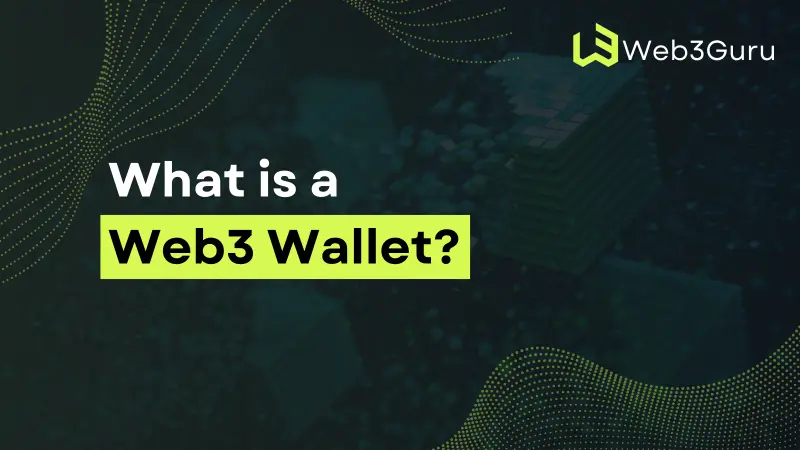Contents
Introduction
Web3 represents a new phase of the internet that aims to create a decentralized online environment. Unlike the traditional internet, where control is held by central authorities, Web3 uses blockchain technology to distribute control among users. This shift brings greater privacy, security, and user empowerment.
Web3 wallets are crucial tools for this decentralized web. What is a Web3 wallet? It enables users to manage and transact digital assets safely. These wallets are necessary for accessing a variety of decentralized applications (dApps) and participating in the new digital economy.
A Web3 wallet is a digital tool for storing and managing digital assets like cryptocurrencies and NFTs. It uses cryptographic keys to authorize transactions and access assets on the blockchain. Unlike traditional wallets, which depend on centralized institutions, Web3 wallets give users complete control over their assets, enhancing security and privacy. They are also designed to work with various blockchains and dApps, making them versatile for managing digital assets.
Definition of a Web3 Wallet
A Web3 wallet is a digital tool used to store, manage, and interact with digital assets like cryptocurrencies and NFTs. It holds cryptographic keys that allow users to authorize transactions and access their assets on blockchain networks.
Web3 wallets are different from traditional financial wallets in key ways. Traditional wallets, such as those used for credit cards or bank accounts, rely on centralized institutions for management and security. In contrast, Web3 wallets operate on decentralized principles, giving users full control over their assets without needing intermediaries. This approach enhances security and privacy, as users aren’t dependent on a single entity that could be vulnerable to hacks. Web3 wallets are also compatible with various blockchains and decentralized applications, offering a flexible platform for managing digital assets.
Types of Web3 Wallets
Web3 wallets come in various forms, each designed to meet different user needs and preferences. They differ in terms of security, control, and usability, allowing users to choose the best fit for their specific requirements.
Hot Wallets
Hot wallets are digital wallets that are always connected to the internet. They are convenient for frequent transactions and easy access to digital assets. Examples of hot wallets include MetaMask, Trust Wallet, and Rainbow Wallet.
Cold Wallets
Cold wallets, on the other hand, are not connected to the internet, which makes them more secure against hacks and online threats. They are typically used for long-term storage of digital assets. Popular examples include Ledger and Trezor.
Custodial Wallets
Custodial wallets are managed by a third party, which means that the user entrusts their private keys to this service. While this can simplify the user experience, it also means that control over the assets is shared with the custodian. Examples include Binance and Coinbase Exchange.
Non-Custodial Wallets
Non-custodial wallets give users full control over their private keys and, consequently, their digital assets. This offers greater security and autonomy. Examples of non-custodial wallets are Coinbase Wallet, MetaMask, and Phantom.
Smart Contract Wallets
Smart contract wallets are built on blockchain technology and include programmable features that can automate transactions and other functions. These wallets can require multiple approvals (multi-signature) for added security. Argent and Gnosis Safe are notable examples.
Email Wallets
Email wallets simplify the process of creating and accessing a wallet by using an email login. They are designed for ease of use, making them accessible to those less familiar with blockchain technology. Examples include Paper and Magic.
Key Features of Web3 Wallets
Web3 wallets offer several features that make them essential for managing digital assets and interacting with decentralized applications (dApps).
Decentralized Asset Management
Web3 wallets provide users with complete control over their digital assets. Unlike traditional wallets, where a central authority manages the assets, Web3 wallets allow users to directly manage their funds without intermediaries. This decentralization enhances security and privacy, as users are not dependent on a single entity that could be compromised.
Interoperability with dApps
One of the significant advantages of Web3 wallets is their ability to interact with various dApps across different blockchains. This interoperability means users can use a single wallet to access a wide range of services, from financial applications to gaming and social media platforms, all within the decentralized web.
Security Measures
Web3 wallets incorporate several security features to protect digital assets:
- Private Keys: Private keys are crucial for accessing and controlling digital assets. Web3 wallets ensure that users have sole ownership of their private keys, enhancing security and control.
- Multi-Signature Requirements: Some wallets, especially smart contract wallets, offer multi-signature capabilities, requiring multiple approvals for transactions. This feature adds an extra layer of security.
- Two-Factor Authentication: To further secure accounts, many Web3 wallets support two-factor authentication, which requires an additional verification step beyond just the password.
These features make Web3 wallets a secure and versatile tool for managing digital assets and interacting with the decentralized web.
Popular Web3 Wallets and Their Use Cases
Several Web3 wallets have gained popularity due to their unique features and ease of use. Here are some of the most widely used wallets and their common applications.
MetaMask
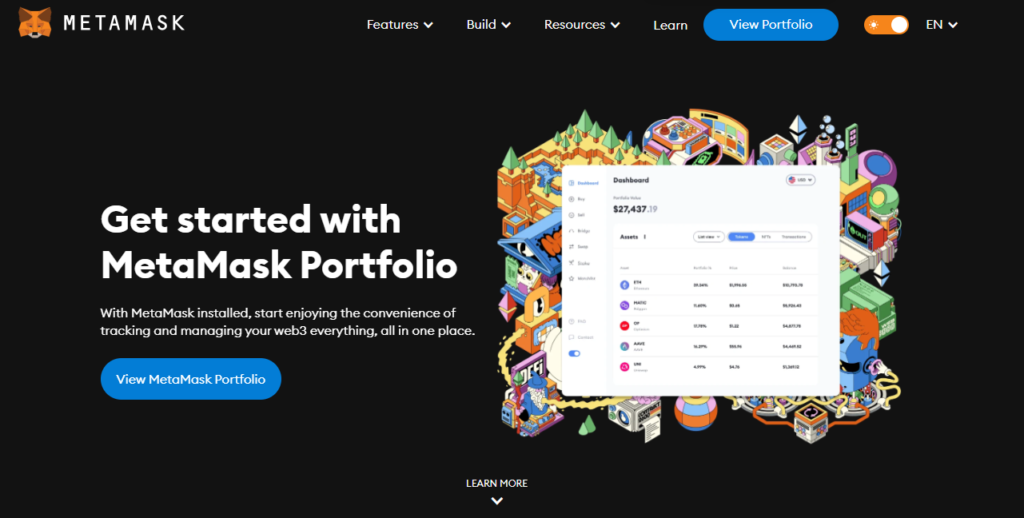
MetaMask is one of the most popular Web3 wallets, known for its user-friendly interface and strong security features. It allows users to interact with Ethereum and other EVM-compatible blockchains, making it a versatile tool for accessing decentralized finance (DeFi) applications, NFTs, and other dApps. MetaMask is available as a browser extension and a mobile app, providing flexibility in how users manage their digital assets.
Trust Wallet
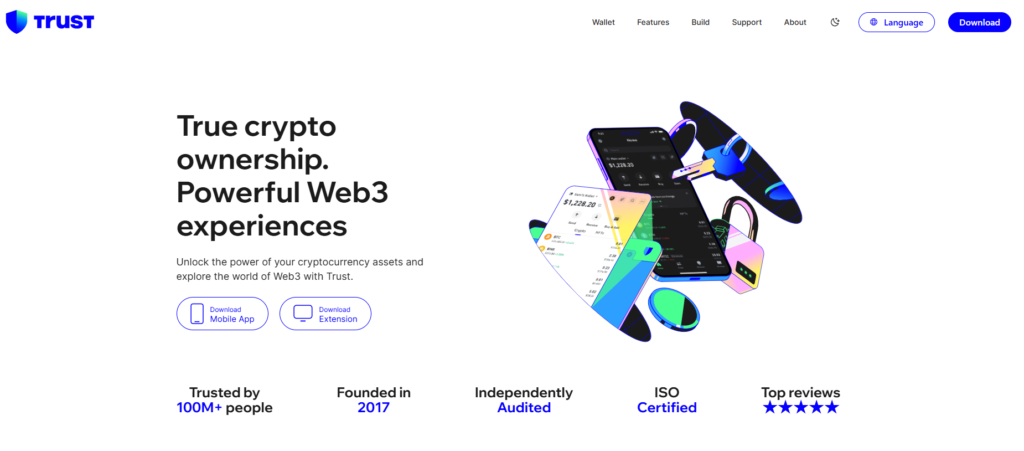
Trust Wallet is a multi-cryptocurrency wallet that supports a wide range of digital assets. Its user-friendly interface and strong security features make it a preferred choice for storing and managing various cryptocurrencies. Trust Wallet also supports staking, enabling users to earn rewards on their crypto holdings. It is well-suited for those who want a comprehensive wallet for managing multiple types of digital assets.
Coinbase Wallet
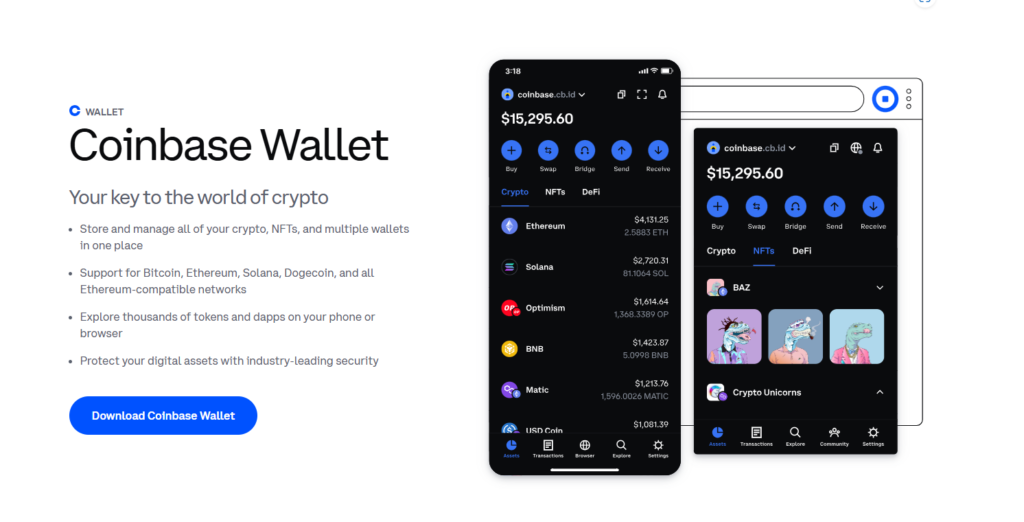
Coinbase Wallet is a non-custodial wallet that offers users full control over their private keys and digital assets. It is distinct from the Coinbase exchange platform and provides enhanced security and privacy. Coinbase Wallet supports a variety of cryptocurrencies and allows users to interact with dApps directly. It is a good choice for those who value security and wish to keep their assets separate from exchange accounts.
Argent
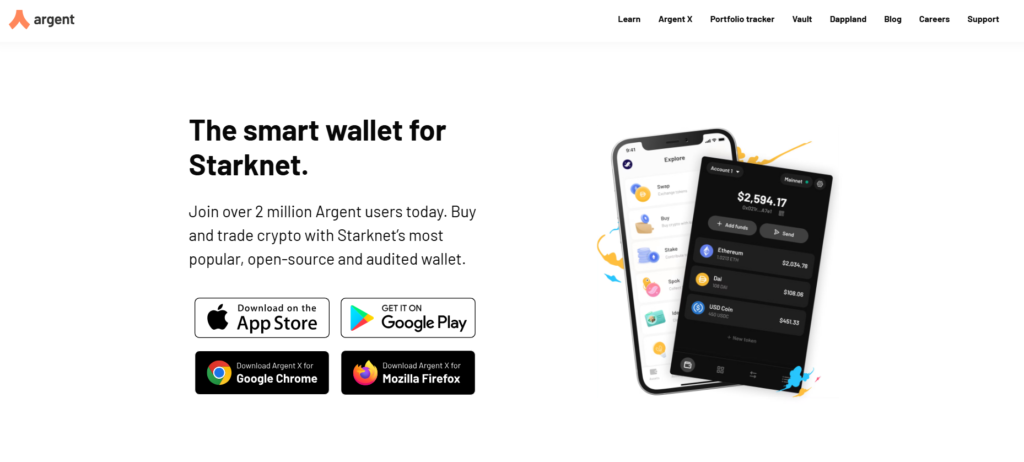
Argent is a smart contract wallet designed specifically for Ethereum-based DeFi applications. It offers advanced features like multi-signature security, built-in DeFi integrations, and social recovery mechanisms. Argent simplifies the DeFi experience by providing a seamless interface for interacting with various financial applications. It is ideal for users who are heavily involved in DeFi and want a secure, easy-to-use wallet.
These popular Web3 wallets cater to different needs and preferences, making it easier for users to find a wallet that suits their specific requirements.
How to Choose a Web3 Wallet
Choosing the right Web3 wallet involves considering various factors to ensure it meets your specific needs and preferences. Here are some key aspects to keep in mind.
Considerations for Selection
- Security Features and User Control: Look for wallets that offer strong security features, such as private key management, multi-signature requirements, and two-factor authentication. Non-custodial wallets provide greater control and security since you maintain ownership of your private keys.
- Compatibility with Desired Blockchains and dApps: Ensure the wallet you choose supports the blockchains and dApps you plan to use. Some wallets are optimized for specific blockchains or offer better integration with certain dApps, enhancing your overall experience.
- Ease of Use and User Interface: A user-friendly interface can make a significant difference, especially for beginners. Choose a wallet with an intuitive design that simplifies managing digital assets and interacting with dApps.
Personal Needs and Preferences
Tailor your choice of wallet based on your specific needs:
- Long-Term Storage: If you plan to hold your digital assets for an extended period, consider a cold wallet for enhanced security.
- Frequent Trading: For active traders, a hot wallet with quick and easy access to digital assets might be more suitable.
- Specific Blockchain Interactions: If you frequently use a particular blockchain or set of dApps, ensure the wallet you choose is optimized for those interactions.
By carefully considering these factors, you can select a Web3 wallet that aligns with your security needs, usage patterns, and personal preferences, ensuring a smooth and secure experience in the decentralized web.
Setting Up and Using a Web3 Wallet
Setting up and using a Web3 wallet involves a few straightforward steps. Here’s a guide to help you get started.
1. Setting Up a Wallet
Choose a Web3 wallet that meets your needs. For this guide, we’ll use MetaMask as an example. Download the MetaMask browser extension or mobile app from the official website or app store. Open MetaMask and follow the prompts to create a new wallet. Set a strong password. MetaMask will generate a 12-word seed phrase. Write this down and store it in a safe place. This phrase is crucial for recovering your wallet if you forget your password or lose access to your device.
2. Transferring and Managing Digital Assets
To add funds to your MetaMask wallet, click on the “Add Funds” button. You can transfer cryptocurrency from another wallet or buy crypto directly within MetaMask. Your digital assets will be displayed on the main dashboard, showing balances and recent transactions. To send cryptocurrency, click “Send,” enter the recipient’s address, and specify the amount. To receive funds, click “Receive” to display your wallet address and share it with the sender.
3. Interacting with dApps and Conducting Transactions
Navigate to a decentralized application (dApp) you wish to use and connect your MetaMask wallet by approving the connection request. When conducting transactions within a dApp, MetaMask will prompt you to approve transaction details, including gas fees. Review and confirm the transaction.
4. Best Practices for Security
Keep your seed phrase and private keys in a secure location. Do not share them or store them digitally where they could be hacked. Regularly back up your wallet and keep multiple copies of your seed phrase in different secure locations. Enable two-factor authentication for added security.
Future Trends and Developments
Web3 wallets are continually evolving, with new features and improvements enhancing their functionality and user experience. Here are some trends and developments to watch for.
Innovations in Web3 Wallets
Web3 wallets are expected to incorporate more advanced security features, such as biometric authentication and enhanced multi-signature capabilities. Additionally, there will be improvements in user experience, making wallets more intuitive and accessible to a broader audience. Integration with decentralized identity solutions and improved interoperability with various blockchains and dApps are also anticipated.
Role in the Broader Web3 Ecosystem
As the Web3 ecosystem grows, Web3 wallets will play an increasingly central role. They will be key to accessing and interacting with decentralized finance (DeFi) applications, NFTs, decentralized autonomous organizations (DAOs), and other emerging Web3 applications. Wallets will become more integrated with various aspects of the decentralized web, providing users with seamless and secure access to a wide range of services and platforms.
These trends highlight the ongoing development of Web3 wallets and their importance in the expanding decentralized internet landscape. Users can look forward to more secure, user-friendly, and versatile wallets as the technology continues to advance.
Conclusion
Web3 wallets are essential tools for navigating the decentralized web, providing users with secure and user-controlled means of managing digital assets. They differ significantly from traditional financial wallets, offering various types such as hot wallets, cold wallets, custodial wallets, non-custodial wallets, smart contract wallets, and email wallets, each catering to different needs.
Key features of Web3 wallets include decentralized asset management, interoperability with dApps, and robust security measures like private keys, multi-signature requirements, and two-factor authentication. Popular wallets like MetaMask, Trust Wallet, Coinbase Wallet, and Argent highlight the diversity in functionalities and use cases available to users.
Choosing the right Web3 wallet involves considering security features, compatibility with blockchains and dApps, and user interface preferences. Setting up and using a Web3 wallet is a straightforward process, but it requires careful attention to security best practices.
Future trends indicate that Web3 wallets will continue to evolve, incorporating advanced security features, better user experiences, and deeper integration with the broader Web3 ecosystem.
As the decentralized web grows, Web3 wallets will remain at the forefront, enabling users to fully participate in and benefit from this new digital economy. Exploring and choosing a Web3 wallet that fits your needs is a crucial step in embracing the potential of the decentralized internet.

SEO Copywriter with a strong background in SEO and copywriting, bringing extensive experience in keyword research, on-page SEO, and content optimization. Demonstrated ability to craft compelling and optimized content that drives traffic and engagement. Passionate about the SEO and web3 industries, continually staying updated with the latest trends and best practices to ensure high-quality content
